The maelstrom of the 1914–18 war sucked in thousands of musicians. Many were killed or maimed, countless others had memorable or traumatic experiences, and some even managed to make music in the midst of the turmoil. Tully Potter tells the extraordinary tales of some of the myriad string players caught up in the action. From August 2014

Discover more Featured Stories like this in The Strad Playing Hub
AUSTRIA
Fritz Kreisler was at the height of his fame when war broke out in 1914. He and his wife Harriet were taking a cure at a Swiss spa when on 31 July they read in a newspaper that his old regiment had been mobilised. Although he had resigned his reserve commission two years previously, Kreisler set off at once for Vienna to report for duty and discovered he was being called up anyway. Sent to the Eastern Front at Lemberg [Lviv, in western Ukraine], he found himself fighting the Cossacks.
On 6 September he was knocked over by a charging horse and wounded in the leg by a lance, but shot his main adversary before passing out. He was not found by his orderly for hours and in the confusion a report of his death was flashed round the world. Harriet did not know he was alive until 10 September. Discharged after recuperation and promoted to captain, he was free to resume his career and set off with Harriet for America, arriving on 24 November walking with a stick and still injured in the right shoulder. He started giving concerts, playing through the pain, and in April 1915 his memoir Four Weeks in the Trenches was published, making him a hero.
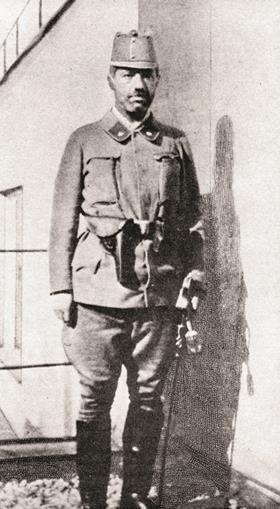
On 6 April 1917, however, the US entered the European war; and by 27 June the first GIs were landing in France. By 7 November ‘patriotic societies’ in Pittsburgh were objecting to forthcoming appearances by the Austrian-born Kreisler and German-born conductor Karl Muck. In vain the violinist protested that he had supported 60 British, French, Russian and Italian children stranded in Vienna: the only other money he had sent to Austria had been a monthly remittance for his 74-year-old father. On 26 November he cancelled the rest of his tour, asking to be released from contracts worth $85,000. He still played in the major centres, where audiences were more sophisticated, but on 8 March 1918 he called off all concerts and devoted himself to composing his operetta Apple Blossoms and a string quartet.
On 27 October 1919 he played his first recital after his 19-month lay-off, at Carnegie Hall in aid of Vienna Children’s Milk Relief, to an overwhelming ovation. This metropolitan success did not help his cause with audiences in middle America; and as soon as he resumed touring he met resistance, mainly from American Legion branches who saw him as an enemy alien. In one town he was forbidden to play German music, in others he had to cancel recitals and in Ithaca, New York, a near-riot erupted before Legion members cut off the power. Kreisler and pianist Carl Lamson played the last 40 minutes in darkness. But in Boston he was kindly received and in New York on 21 December an audience of 4,000 acclaimed him.
In June 1920 he and Harriet made their first trip back to Austria, to distribute food and clothing to people starving in the aftermath of the war. He played three concertos in London on 4 May 1921 and was welcomed back with a most un-British fervour.
GERMANY
Paul Hindemith, then still a violinist, was not called up by the German army until August 1917. Asking to transfer to a military band, he ended up at Tagolsheim, Alsace, with a sympathetic and musical commanding officer. ‘Officially I am a drummer in the regimental band, but my main task is playing quartets,’ he wrote to a friend. ‘My partners are unfortunately not first-class, but they are very keen and make a tremendous effort. I also give them lessons in harmony.’
To another friend he wrote: ‘The count, our regimental commanding officer, for whom we always play, is delighted. He is extraordinarily kind to me… In the band I bang the big drum with skill and enthusiasm. I am assured that this instrument has never before been handled with such precise rhythm.’
He even managed some composing; and although his CO’s death in action was a big blow, the replacement colonel also turned out to be a music lover. ‘He has quartets played to him,’ wrote Hindemith, ‘and, since he is familiar with the entire chamber music repertoire, he arranges his own programmes. He is a very attentive listener, so playing for him is a pleasure.’ Discharged early in 1919, Hindemith went back to leading the Frankfurt opera orchestra, switching to viola in the Rebner Quartet.
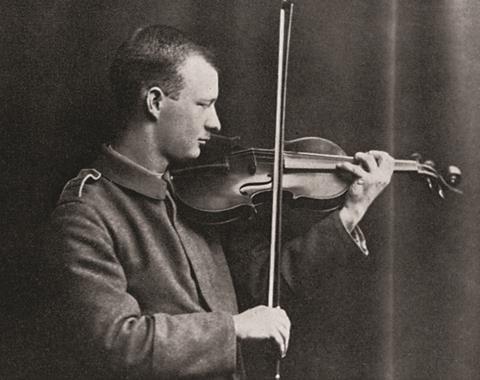
The most bizarre wartime experience was that of the violinist Henri Marteau, who held Joseph Joachim’s old job at the Berlin Hochschule. During the initial stages of the war the half-French, half-German Marteau fell foul of the German authorities. Although resident in Bavaria, he held French nationality, was a lieutenant in the French Army reserve and as recently as 1911 had taken part in military manoeuvres. Interned for four months in various German towns, he was released in 1915 but allowed to teach only from his home. In 1916 he and his wife Blanche were arrested on suspicion of spying and separately imprisoned for months. This affair virtually ended Marteau’s German career and from 1920 he travelled on a Swedish diplomatic passport. Among the other internees were a number of British musicians who had made careers in Germany.
Arthur Williams, one of three brothers whose musical achievements still resonate in their Welsh homeland, was the founder cellist of the Klingler Quartet and one of Joachim’s inner circle: like his teacher, Robert Hausmann of the Joachim Quartet, he played without an endpin to the end of his days. When war broke out, Williams was urged by German friends to take naturalisation but demurred. He, his wife and son were all interned and although the others were sent home in 1915, Williams himself was not exchanged for a German internee until 1916 – by which time he had developed a tremor in his right hand. His sensitive nature never recovered from the trauma caused by internment, by seeing Britain and his beloved Germany at war, and by the fact that Karl Klingler, first violinist of the Klingler Quartet, never visited him in Ruhleben camp, where he was interned. His playing career was finished, although he made a great contribution as a coach – of the young Griller Quartet, for instance.
From the Archive: The Strad responds to the declaration of World War I
Read: Violin made by World War One soldier is given new life
Also caught in Germany by the declaration of war and interned at Ruhleben was the German-born cellist Carl Fuchs who had settled in Manchester, wed an Englishwoman and become a British subject. ‘At Christmas-time the irony of fate played me a wicked trick,’ Fuchs recalled. ‘Who can listen to Handel’s Messiah without being impressed by its grandeur? But there is a vast difference between listening to the Messiah and being obliged to play the deadly dull cello part. Just as in Germany one cannot imagine Christmas without a Christmas tree, so in England the Messiah is closely associated with the festival, and members of orchestras in England looked forward to this period with mixed feelings, as they were expected to “messiah” in the smallest towns. Well, at any rate, we would be safe from this at Ruhleben! But we had miscalculated. A choir was formed (the orchestra had existed for some time) and we were not spared the Messiah. No escape!’ Fuchs did get released on parole but was separated from his wife and two sons for four years.
FRANCE
The French authorities drafted Marteau’s colleague Jacques Thibaud straight into the Automobile Corps of the 13th Regiment of Artillery. ‘Recently he was obliged to travel 300 kilometres under fire and to spend the day as a refugee in a trench, travelling only at night,’ his wife, Marguerite Thibaud, wrote to an American friend in December 1914. ‘In the midst of his work, however, he is calm, and in moments of leisure he still works with his violin.’ Fortunately Thibaud was pulled out of the front line after being wounded and was sent to the US as a French government envoy. An awkward moment ensued when he met Kreisler, but the old friends were quickly reconciled.
Less lucky was the cellist member of the musical Casadesus clan, Marcel Casadesus, who was killed in action in October 1914: he was a member of the legendary Capet Quartet, and after his death Lucien Capet suspended the ensemble until the end of the war. No one had expected the Germans to invade Belgium and when it happened, many Belgian musicians including the violinist Eugène Ysaÿe escaped to London.
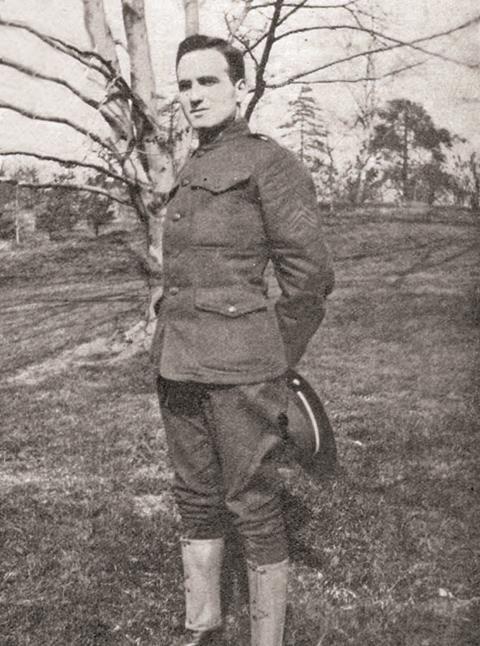
The violinists Désiré Défauw and Ernest LaPrade, later both conductors, and the cellist Émile Doehaert formed the Allied Quartet with the English violist Alfred Hobday (eventually replaced by Lionel Tertis). Germain Prévost, violist of the Pro Arte Quartet, also came to London but then volunteered to fight for the free Belgians on the Dixmude sector, where one of his comrades was the cellist Gérard Hekking. When Ysaÿe visited the front line with Tertis and Doehaerd in the summer of 1916, Prévost was summoned to take part in a Mozart quintet to entertain the King and Queen of the Belgians at the royal villa, La Panne. A Beethoven quartet was played, with Queen Elisabeth as second violinist, to the accompaniment of a tremendous artillery duel between the Belgians and Germans. Prévost later organised his own Quatuor de l’Armée de Campagne; and eventually all four Pro Arte players were seconded to perform in uniform as the Quatuor de Régiment des Guides.
AMERICA
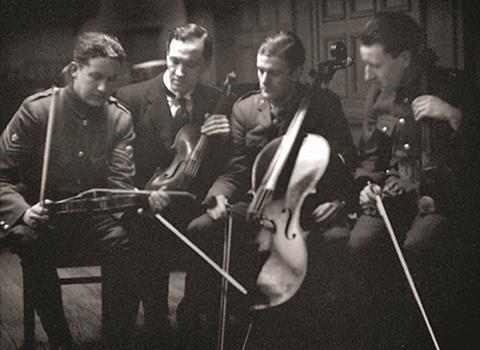
In April 1917 America entered the war. One of those who enlisted, even though he had been granted an exemption, was 25-year-old David Hochstein, a pupil of Otakar Ševcík and Leopold Auer and one of the country’s brightest violin prospects. Auer arrived in the US in October 1917 to find Hochstein in his sergeant’s uniform, directing a military band and ready to leave for France. The young man was able to play his 1715 Stradivari in France but in a bus accident the violin was smashed – it was later repaired – and Hochstein requested transfer to a combat unit. In the Battle of the Argonne Forest the last major Allied offensive, Hochstein – by then a lieutenant – was killed on 15 October. His body was never recovered. He is remembered by three rare recordings, including his own well-known transcription of Brahms’s popular Waltz, and by the music school named after him in his home town of Rochester.
Albert Spalding, the patrician Yankee violinist from a renowned sports goods family, had a better outcome to his war service. When America entered the war, he cancelled engagements worth more than $35,000 to enlist in the Air Service of the Signal Corps, and served with distinction in Europe until 1919, although he never fulfilled his ambition to be an actual flyer. Fluent in Italian and French, he became adjutant to Captain Fiorello H. LaGuardia, who would later be a celebrated mayor of New York, and the two friends, based at Foggia in Italy, made an adventurous sortie to Spain to procure materials for aircraft construction. When their orders from General Pershing for this excursion were delayed for a week, Spalding forged substitute orders while LaGuardia turned a blind eye.
BRITAIN
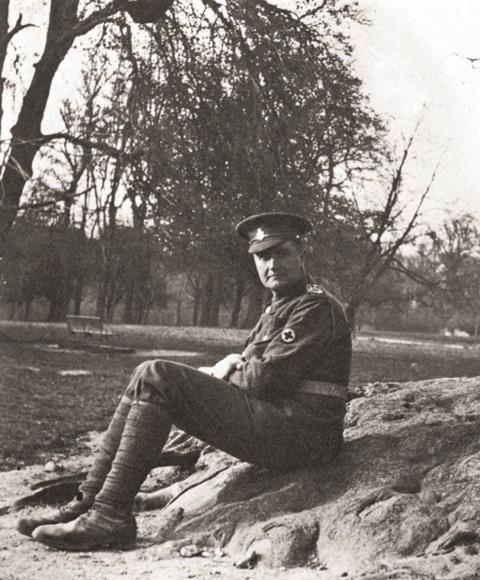
At first, the British Expeditionary Force (BEF) subsisted on regulars and the volunteers lured by Kitchener’s ‘Your country needs YOU’ poster to join what Kaiser Wilhelm II dismissed as ‘General French’s contemptible little army’. Among those streaming to the colours was 36-year-old cellist Edward Mason, who had first appeared in London aged twelve as a violinist: trained at the Royal College of Music (RCM) under W.E. Whitehouse, he taught at Eton from 1897 as assistant to C.H. Lloyd, made his London cello debut in 1900 and in 1905 wed Jessie Grimson, violinist member of a musical family. Their Grimson Quartet became one of the country’s best. Mason was also principal cellist and a director of the New Symphony Orchestra, which he conducted on its first Queen’s Hall appearance in 1906. In 1907 he founded the Edward Mason Choir, which gave many premieres. In 1914 Mason joined the Universities and Public Schools Battalion and on 24 February 1915 he was commissioned as a second lieutenant in the Northamptonshire Regiment. Sent to France at the end of March, he found himself in the Fromelles sector.
‘He was killed gallantly leading his men in the attack on 9 May against the German trenches,’ a fellow officer reported. Apparently Mason faced devastating fire from the German machine guns and was cut down by a hail of bullets – officers, being to the fore, tended to be the first to fall. Jessie Grimson’s brother Harold Bonarius, a violinist who used his mother’s surname professionally and studied with Joseph Joachim, also enlisted in 1914. He was killed on 1 December 1917. Grimson never got over losing her husband and brother: she carried on her career in the 1920s but became ill in 1927 and retired to teach.
Another 1914 recruit was viola-playing composer Ralph Vaughan Williams, who started as a Special Constable, transferred to the RAMC ambulance unit, with which he saw action in France, and in 1917 was commissioned in the Royal Garrison Artillery. Wherever he went, he got a choir going. After the Armistice he was made Director of Music, First Army, BEF France, organising choirs, orchestras and music classes.
Not quite so lucky was Bernard Shore, an organist whose second study at the RCM was viola. Enlisting in the Artists Rifles in January 1915, the 18-year-old was sent to France, where he was commissioned in the 2nd Rifle Brigade. In an accident on 15 February 1917 he was severely wounded in the right hand by a Mills bomb that exploded as he threw it. As he was carried, still conscious, into the field dressing station, Shore told the surgeon: ‘I want you to preserve every eighth of an inch you can.’ He was left with enough of the hand to grip a bow, so decided to concentrate on the viola.
Meanwhile, undeterred by his injury, he transferred to the fledgling Royal Flying Corps. Encouraged by his father and RCM principal Hubert Parry, in 1919 he resumed his studies there (viola with Arthur Bent, horn with Adolf Borsdorf, composition with Thomas Dunhill), winning two gold medals. By 1921 he was playing in the British Symphony Orchestra under Adrian Boult and in 1922 he joined the Queen’s Hall Orchestra. Private studies with Tertis from 1924 made him one of Britain’s finest violists and in 1930 he became the founding viola principal of the BBC Symphony Orchestra (BBC SO). After RAF service in World War II he was a leading light in education and lived until 1985, a much-loved gentleman of the viola.
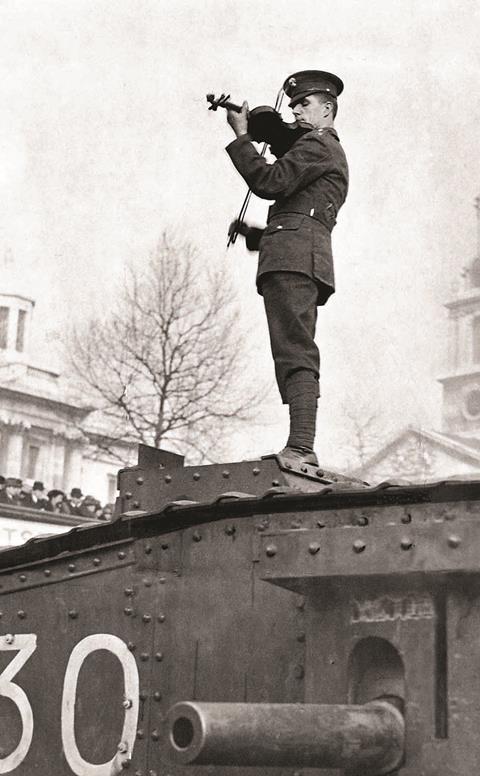
Early in 1916 conscription came in. Among those swept up was Albert Sammons, just turned 30, who joined the Grenadier Guards. He had to stand on a tank in Trafalgar Square playing his violin, for a stunt photo designed to bring in recruits, but otherwise the worst part of his war was having to learn the clarinet so that he could march in the band. He was even able to give concerts while in the army.
Less formal were the appearances of James Lockyer, then 32 and a leading violist – member of the Walenn Quartet, principal of the Queen’s Hall and Thomas Beecham orchestras and a teacher at his alma mater the Royal Academy of Music (RAM) – who was involved in the Salonica campaign in Greece as a lieutenant. ‘You read of our big strafe, I expect,’ he wrote to RAM principal Alexander Mackenzie on 19 June 1917. ‘Well, the night it started a concert was given by a machine-gun company waiting to go into the line, right under one of the big guns in action. I bought a fiddle in Salonica, and was accompanied only by an occasional burst from the fellow a few hundred yards off. My fiddle has some history. It cost £4, and two days after its arrival the scroll broke off from the A peg upwards.
’This was mended by an armourer-sergeant with a brass plate each side of the scroll. Always when going out to play an orderly, mounted, is sent to guide me and carry the instrument. Two of them have been unnerved and dropped it. First the bridge broke and the post came down. A wheelwright made me a bridge to pattern, and the armourer got the post up. Second drop removed the fingerboard and post again. A saddler glued on the board, and I fixed the post by means of a safety-pin, pair of scissors, and some language describing my opinion of the fellow who dropped it. Occasionally I play at the corps headquarter church, with Eskell organ accompaniment. You see, sir, how music is part of our existence, even under shell-fire.’
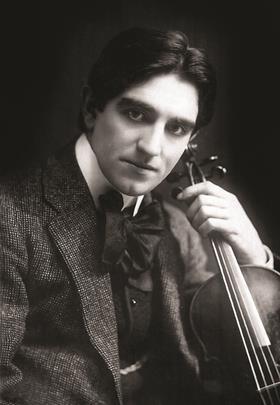
Lockyer survived, as did Edwin Quaife, a fellow Queen’s Hall Orchestra violist, who became a sub-lieutenant in the Navy: after the war he was second violinist in the influential Spencer Dyke Quartet, taking part in a number of recordings. Thomas Petre, second violinist of the London Quartet, was able to reclaim his place in the ensemble; cellist Ambrose Gauntlett, who became a dispatch rider in the Royal Naval Air Service, lived to be principal cello of the BBC SO and a pioneer gambist.
The members of the Philharmonic Quartet also survived, although the ensemble was suspended throughout 1917. Leader Arthur Beckwith, drafted into the Life Guards band, was kept in Britain and in 1918 the entire quartet appeared regularly in uniform, in both concert hall and recording studio. In 1919 Beckwith moved to Eastbourne, as music director at the Grand Hotel, then led the Philharmonic Society orchestra in London and the Cleveland Orchestra in America, but died of pneumonia in 1928, aged 41. Cellist Cedric Sharpe, after serving in the Glamorgan Yeomanry and the Tank Corps, was invalided home from France to work at the War Office. He continued to be one of Britain’s top cellists, playing in the Virtuoso Quartet after the Philharmonic Quartet disbanded in 1924.
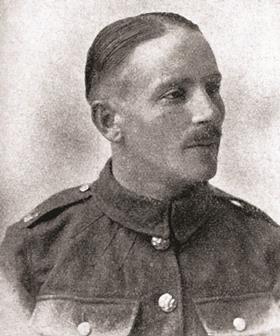
Among the casualties, one of the saddest was RCM graduate Rohan Clensy, well known before the war as a violinist – and even as an actor, playing his fiddle on stage. His last London appearance in this capacity came in a 1912 revue, in ‘The Mastery of Music’, a wordless sketch featuring Muriel Ridley as a character called Germaine. ‘With her enters a violinist lover, Mr Rohan Clensy,’ The Times reported, ‘and at her invitation proceeds to make sweet music, supported by the orchestra, to which Germaine dances, after having shed as much of her upper clothing as is convenient.’ A corporal in the Military Mounted Police, Clensy was somehow killed on 24 February 1919, more than three months after the Armistice.
Read: Musical service: String groups in the US military
Read: From Dnipro to Landshut: Violins that travel through a war
Read: Zukermans team up with fourth graders to commemorate war veterans
Discover more Featured Stories like this in The Strad Playing Hub
The number one source for playing and teaching books, guides, CDs, calendars and back issues of the magazine.
In The Best of Technique you’ll discover the top playing tips of the world’s leading string players and teachers. It’s packed full of exercises for students, plus examples from the standard repertoire to show you how to integrate the technique into your playing.
The Strad’s Masterclass series brings together the finest string players with some of the greatest string works ever written. Always one of our most popular sections, Masterclass has been an invaluable aid to aspiring soloists, chamber musicians and string teachers since the 1990s.
The Canada Council of the Arts’ Musical Instrument Bank is 40 years old in 2025. This year’s calendar celebrates some its treasures, including four instruments by Antonio Stradivari and priceless works by Montagnana, Gagliano, Pressenda and David Tecchler.

























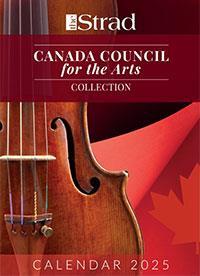



















No comments yet